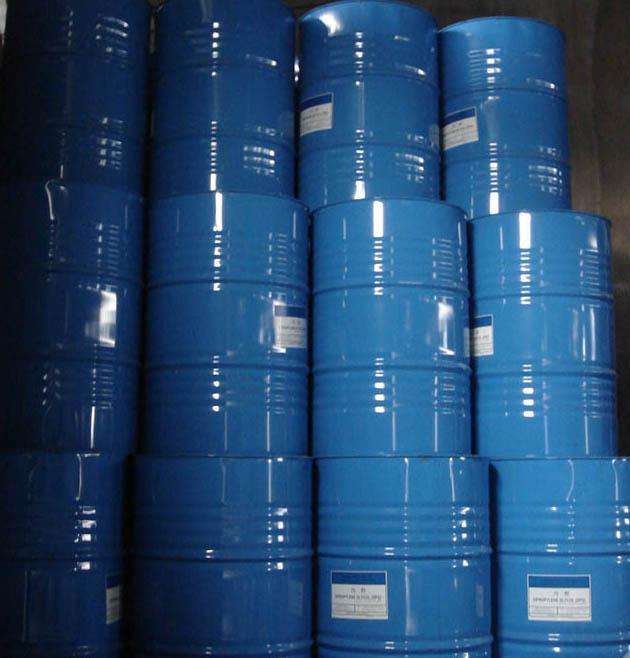Manufacturer :EVONIK Degussa
Structure: 3-isocyanatomethyl-3,5,5-trimethylcyclohexyl isocyanate
Physical properties
Properties
Numerical value
Unit
Test method
Density (20℃)
1.058-1.064
g/cm3
DIN51757ASTMD2111
Viscosity (23℃)
13-15
mPa-s
DINENISO3219
Color (APHA)
<30
–
DIN/ISO6271
Refractive index (N25D)
1.483
–
DIN51423 Part II
Vapor pressure (50°C)
Approx. 0.02
hPa
–
Flash point (closed cup)
155
flash point (closed cup) 155 ºC
DIN51758
Flash Point
430
Ignition point 430 ºC
DIN51794
Specification
Properties
Numerical value
Unit
Test Method
NCO content
37.5-37.8
%Weight
ENISO11909ASTMD2572
Purity
>99.5
%Weight
Gas Chromatography
Total Chlorine
<400
ppm
–
Hydrolyzed Chlorine
<200 ppm
ppm
–

IPDI Properties and Applications
The alicyclic diisocyanate VESTANAT®IPDI meets all the necessary conditions for the production of light-stable and weather-resistant polyurethanes. The selection of the appropriate co-reactants (polyols) gives the polyamino acid system a high degree of resistance to yellowing and properties typical of polyurethanes, such as good mechanical and chemical resistance. In addition, IPDI has many advantages in the polyurethane process due to its inherent properties.
Since VESTANAT®IPDI contains two different isocyanate functional groups, it presents selectivity in ammonia esterification reactions, e.g. in the synthesis of pre-polymers, resulting in good reproducibility. The selective formation of the desired product narrows the molecular weight distribution, reduces the viscosity and also reduces the residual concentration of the starting monomer diisocyanate (IPDI). As a raw material for polyurethanes, IPDI and its polyisocyanates and prepolymers are known for their excellent miscibility with other resins and good solubility in a variety of general-purpose solvents such as ketones, esters, ethers, and aromatics. Good solubility and miscibility in aliphatic hydrocarbons such as petroleum solvents is also exceptional.
From a technical point of view, VESTANAT® IPDI is an important starting isocyanate for the production of raw materials for polyurethane paints. It is used in various polyurethane paint systems in different forms. Other important uses are solvent-free, light-stabilized polyurethane injection molding technology (RIM) and water-based adhesives or hot melt glues. In polyurethane resin technology, the preparation of waterborne polyurethane dispersions is the most important application of VESTANAT®IPDI, since low viscosity prepolymers and end products with low co-solvent content can be produced from this starting material. It is a hard segment component of the resin. Polyurethane acrylates synthesized on the basis of VESTANAT®IPDI for radiation curing (conventional or aqueous) can be chosen if excellent yellowing resistance and low reactive diluent or co-solvent content are required.
VESTANAT®IPDI can be used in moisture-curing prepolymers, another application for polyurethane resins, and IPDI can characterize these products with resistance to yellowing, low viscosity and low diisohydrogenate monomer residues. Solvent-borne, high-molecular-weight polyurethane resins based on VESTANAT® IPDI can be used in coatings where abrasion resistance is required, especially where long-term flexibility and light resistance are required. Typical applications are polyurethane resins for artificial leather or natural leather finishes. The polyurethanatization of alkyd resins with IPDI to produce ammonia ester alkyds and ammonia ester oils is mainly used to sufficiently improve the yellowing resistance, drying properties and hardness of these resins.
In the two-component polyurethane sector, VESTANAT® IPDI is used either as an adduct with tertiary alcohols (e.g. adducts with TMP) or in the form of polyisocyanates (e.g. VESTANAT® T1890). This application is mainly used in large vehicle and automotive coatings (OEM and refinish).
VESTANAT®IPDI and its polyisocyanates are used to prepare closed polyisocyanates that can be used as crosslinkers in electrostatically sprayed powder coatings and solvent-borne industrial paints, especially for can coating and coil coating. IPDI-based crosslinkers give solvent-free two-component polyurethanes good light stability and mechanical properties. These systems are mainly used for elastomeric coatings and casting resins. Hard systems can be used as industrial materials.
Reactive and Catalytic
Aliphatic and alicyclic diisocyanates are less reactive than aromatic ones.IPDI usually requires a suitable catalyst to accelerate the ammonia esterification reaction. Dibutyltin dilaurate is recommended as a catalyst for ammonia esterification.
Dibutyltin dilaurate is often used when VESTANAT® IPDI or adducts of this product are used as ambient temperature crosslinkers in polyurethane formulations. Where a complete or partial reaction of isocyanate and water (moisture) is required, a catalyst mixture of dibutyltin dilaurate and a tertiary amine such as diazodicarbocyclooctane (DABCO) should be used. In addition to dibutyltin dilaurate, iron acetylacetonate, phenylmercury salt (COSCATR83) is an effective catalyst for solvent-free polyurethanes (elastomers and casting resins). Of course at high temperatures, resin synthesis, i.e. production of prepolymers, is possible without a catalyst for the reaction. When the temperature is increased, the difference between the two isocyanate activities of IPDI decreases, so that the production of prepolymers is more selective when a catalyst is employed at room temperature. The best selectivity can be achieved at temperatures up to 50°C and with the addition of DBTDL.
Storage and transportation
VESTANAT® IPDI is supplied in non-recyclable 30 kg cans and 200 kg drums, but also in tankers and storage tanks. If moisture can be removed, IPDI can be stored for at least one year without affecting the quality of the above standards. Long-term storage may increase the color index.

 微信扫一扫打赏
微信扫一扫打赏

